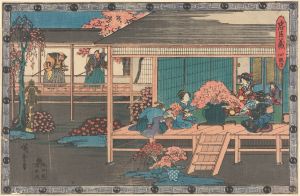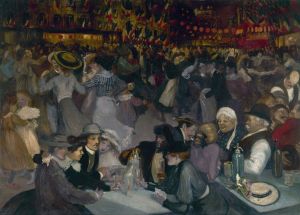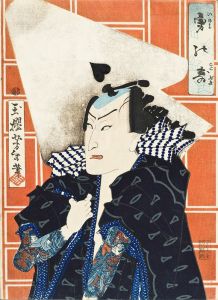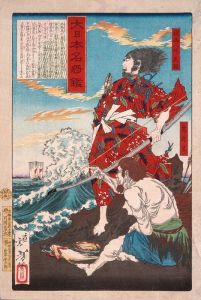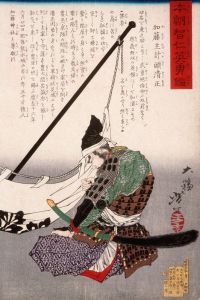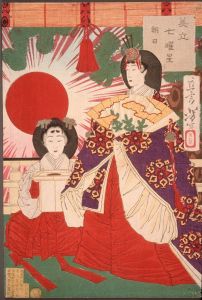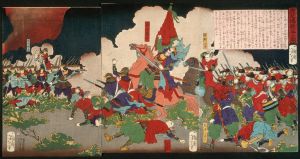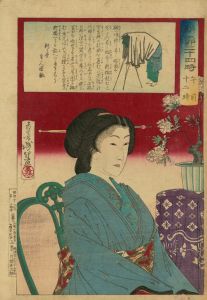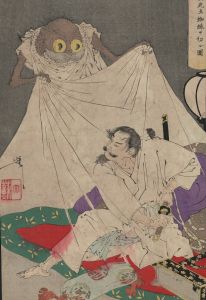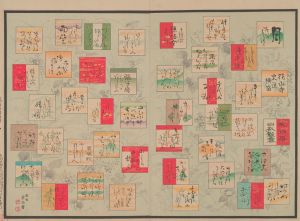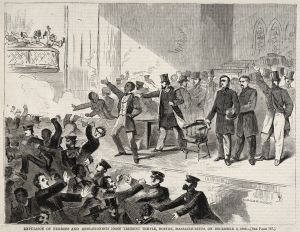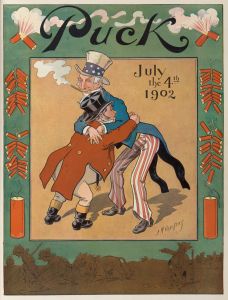
A Bugaku Performance at the Imperial Palace during the Doll Festival
A hand-painted replica of Tsukioka Yoshitoshi’s masterpiece A Bugaku Performance at the Imperial Palace during the Doll Festival, meticulously crafted by professional artists to capture the true essence of the original. Each piece is created with museum-quality canvas and rare mineral pigments, carefully painted by experienced artists with delicate brushstrokes and rich, layered colors to perfectly recreate the texture of the original artwork. Unlike machine-printed reproductions, this hand-painted version brings the painting to life, infused with the artist’s emotions and skill in every stroke. Whether for personal collection or home decoration, it instantly elevates the artistic atmosphere of any space.
Tsukioka Yoshitoshi was a prominent Japanese artist known for his work in ukiyo-e, a genre of woodblock prints and paintings that flourished in Japan from the 17th through 19th centuries. One of his notable works is "A Bugaku Performance at the Imperial Palace during the Doll Festival." This artwork captures a traditional Bugaku performance, which is a classical Japanese dance that has been performed to select elites, including the imperial court, for over a thousand years.
Bugaku, along with its accompanying music called Gagaku, was introduced to Japan from the Asian continent, particularly from China and Korea, and has been preserved as a court tradition. The dance is characterized by its slow, deliberate movements and the use of elaborate costumes and masks. It is often performed during special ceremonies and festivals, including the Doll Festival, also known as Hinamatsuri, which is celebrated on March 3rd. This festival is a time to pray for the health and happiness of young girls in Japan, marked by the display of dolls representing the Emperor, Empress, and other court figures.
Yoshitoshi's depiction of a Bugaku performance during the Doll Festival is significant as it reflects the cultural and historical importance of these traditions in Japan. His work is known for its vivid detail and ability to capture the essence of Japanese customs and rituals. Yoshitoshi lived during a time of great change in Japan, as the country was transitioning from the Edo period to the Meiji era, which saw the modernization and opening of Japan to the West. Despite these changes, Yoshitoshi's work often focused on traditional themes and subjects, preserving the cultural heritage of Japan through his art.
In "A Bugaku Performance at the Imperial Palace during the Doll Festival," Yoshitoshi likely employed his characteristic style, which often included dynamic compositions and a keen attention to detail. His prints are known for their dramatic use of color and intricate line work, which would have been used to convey the elegance and formality of the Bugaku dance. The setting of the Imperial Palace adds a layer of prestige and historical context to the piece, as it underscores the connection between the performance and the Japanese imperial tradition.
Yoshitoshi's work, including this piece, is part of a broader body of art that captures the intersection of tradition and modernity in Japan. His prints not only serve as artistic expressions but also as historical documents that offer insight into the cultural practices of his time. Today, Yoshitoshi is celebrated as one of the last great masters of ukiyo-e, and his works continue to be studied and admired for their artistic and cultural significance.
Overall, "A Bugaku Performance at the Imperial Palace during the Doll Festival" is a testament to Yoshitoshi's skill as an artist and his dedication to depicting the rich cultural tapestry of Japan. Through his work, he has provided a window into the past, allowing contemporary audiences to appreciate the beauty and complexity of traditional Japanese art forms.





